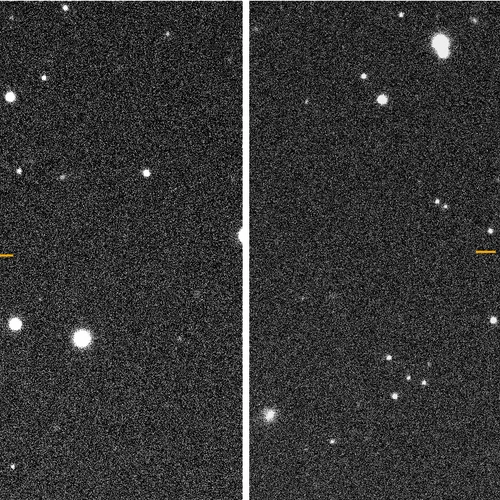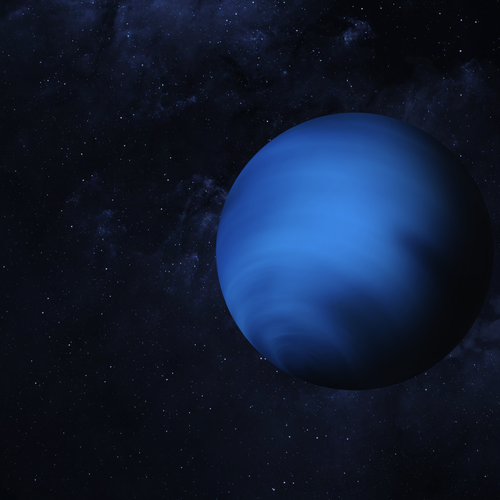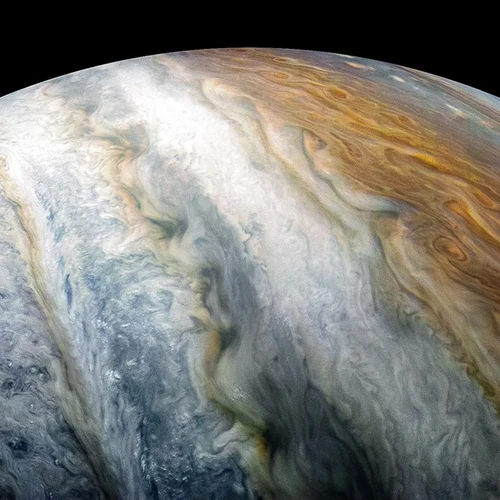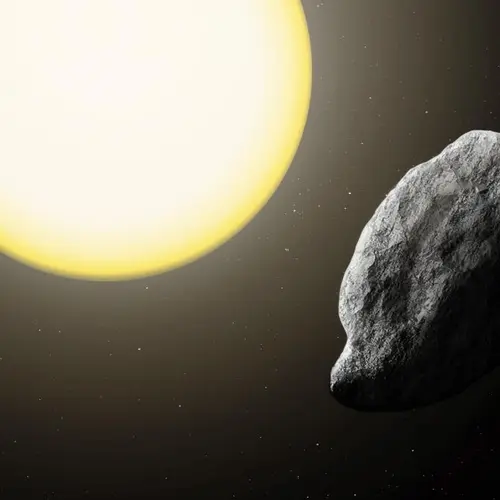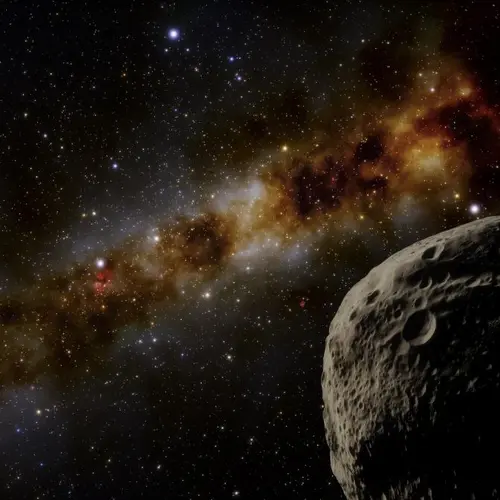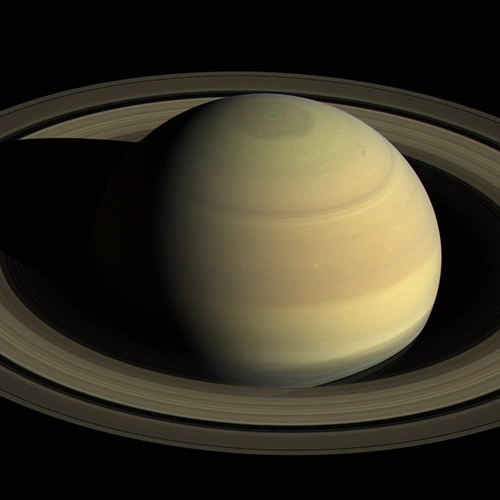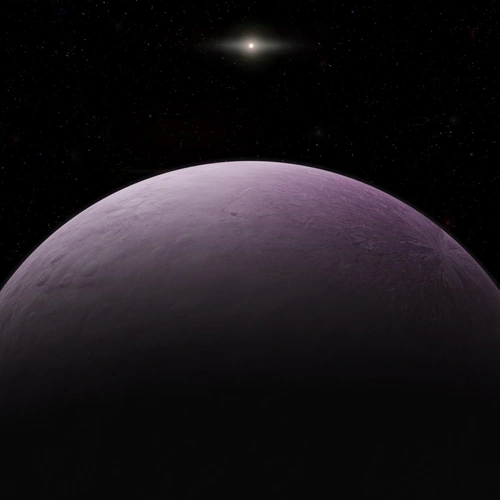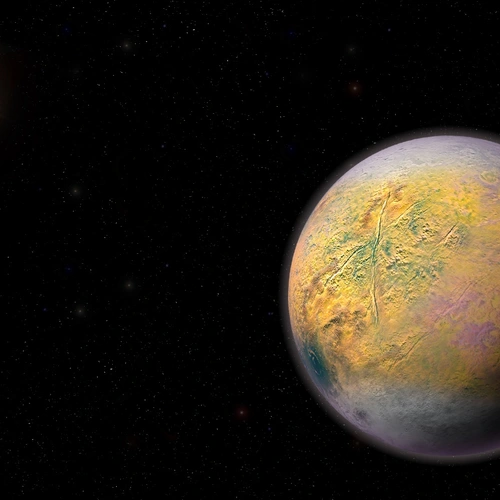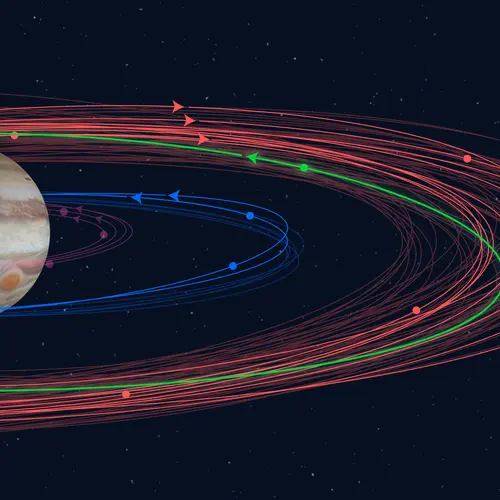CV
- Ph.D. Astronomy University of Hawaii, 2004
Thesis: Small Bodies in the Outer Solar System - M.S. Astronomy University of Hawaii, 2001
- B.A. Physics with Honors Oberlin College, 1998
- 2001 and 2003 ARCS Scholar of the Year
- Hubble Fellow
- Asteroid (17898) named Scott Sheppard
- Farinella Prize in Planetary Science (2019)
- Faculty Member: Carnegie Institution for Science, EPL 7/07-present
- Hubble Fellow: Carnegie Institution for Science, EPL 9/04-7/07
- Research Assistant: Institute for Astronomy, University of Hawaii 5/99-9/04
- Teaching Assistant: Physics and Astronomy, University of Hawaii 8/98-5/99
- Mechanical Engineer: Genencor International 5/98-8/98
- Honors Student: Department of Physics, Oberlin College 8/97-5/98
Project: Determination of Stress in Sputtered Molybdenum Thin Films by X-ray diffraction and Geometric Optics - Tutor: Modern Physics, Oberlin College 8/97-12/97
- Research Fellow: Department of Astronomy, University of Minnesota 5/97-8/97
Project: A Telescope Guidance System - Research Assistant: Department of Physics, Bucknell University 5/96-8/96
Project: The Dust Tail of Comet P/Halley - Laboratory Assistant: Department of Physics, Oberlin College 2/96-5/96
- Research Assistant: NASA Lewis Research Center 12/95-2/96
Project: Attenuation of Microwave Transmission Lines - Research Assistant: Department of Physics, Oberlin College 8/95-12/95
Project: The Efficiency of Solar Cells
- Sheppard, S., In the glare of the Sun, 2022, Science, 377, 366.
- Sheppard, S. et al., A Deep and Wide Twilight Survey for Asteroids Interior to Earth and Venus, 2022, Astronomical Journal, 164, 168.
- Thirouin, A. and Sheppard, S., Lightcurves and Rotations of Trans-Neptunian Objects in the 2:1 Mean Motion Resonance with Neptune, 2022, Planetary Science Journal, 3, 178.
- Clement, M. and Sheppard, S., Stability of Neptune's Distant Resonances in the Presence of Planet Nine, 2021, Astronomical Journal, 162, 27.
- Sheppard, S., Trujillo, C., Tholen, D. and Kaib, N., A New High Perihelion Trans-Plutonian Inner Oort Cloud Object: 2015 TG387, 2019, AJ, 157, 139.
Updated November 2022
Research
The Kuiper Belt, where Pluto lives, is a region of comet-like objects just beyond Neptune. This belt of objects has an outer edge, which we are only now able to explore in detail. For the past few years, astronomer Scott Sheppard and his colleagues have been performing the largest and deepest survey ever attempted to search for distant Solar System objects.
The ongoing search has discovered the object with the most distant orbit known in our Solar System and several of the largest known objects after the major planets. These extremely distant objects are strangely grouped closely together in space, which suggests a yet unobserved planet more massive than the Earth—also known as Planet X— is shepherding them into these similar orbits. (During these searches of the distant Solar System, Sheppard has also discovered near-Earth asteroids and quite a few moons of Jupiter and Saturn.)
The orbits of these objects also give us clues into our Solar System’s early years, including the distinct impression that there was once a third ice-giant planet in our outer Solar System. This ice-giant was likely flung far past Pluto during Jupiter and Saturn’s gravitational dance to find their current stable orbits. Ultimately, this information helps us understand how this and other Solar Systems may form.
In 2019, a team led by Scott S. Sheppard found 20 new moons orbiting Saturn. This brought the ringed planet’s total number of moons to 82, surpassing Jupiter, which has 79.
Each of the newly discovered moons is about five kilometers, or three miles, in diameter. Seventeen of them orbit the planet backward, or in a retrograde direction, meaning their movement is opposite of the planet's rotation around its axis. The other three moons orbit in the prograde—the same direction as Saturn rotates.
Two of the prograde moons are closer to the planet and take about two years to travel once around Saturn. The more-distant retrograde moons and one of the prograde moons each take more than three years to complete an orbit.
“Studying the orbits of these moons can reveal their origins, as well as information about the conditions surrounding Saturn at the time of its formation,” Sheppard explained.
A team of astronomers including Scott Shepphard discovered a new object, which at the time was the most-distant body ever observed in our Solar System. In 2018, it was the first known Solar System object that has been detected at a distance that is more than 100 times farther than Earth is from the Sun.
The new object was announced on Monday, December 17, 2018 by the International Astronomical Union’s Minor Planet Center and was given the provisional designation 2018 VG18. The discovery was made by Carnegie’s Scott S. Sheppard, the University of Hawaii’s David Tholen, and Northern Arizona University’s Chad Trujillo.
2018 VG18, nicknamed “Farout” by the discovery team for its extremely distant location, is at about 120 astronomical units (AU), where 1 AU is defined as the distance between the Earth and Sun.
In the race to discover a proposed ninth planet in our Solar System, Scott Sheppard and Chadwick Trujillo of Northern Arizona University observed several never-before-seen objects at extreme distances from the Sun in our Solar System. Sheppard and Trujillo submitted their latest discoveries to the International Astronomical Union's Minor Planet Center and a paper about the discoveries was published in The Astronomical Journal.
"Objects found far beyond Neptune hold the key to unlocking our Solar System's origins and evolution," Sheppard explains. "Though we believe there are thousands of these small objects, we haven't found very many of them yet, because they are so far away. The smaller objects can lead us to the much bigger planet we think exists out there shepherding these smaller objects around. The more we discover, the better we will be able to understand what is going on in the outer Solar System."
There are places in space where the gravitational tug between a planet and the Sun balance out, allowing other smaller bodies to remain stable. These places are called Lagrangian points. So-called Trojan asteroids have been found in some of these stable spots near Jupiter and Neptune.
Trojans share their planet's orbit and help astronomers understand how the planets formed and how the solar system evolved.
Scott Sheppard and his colleague Chad Trujillo at the Gemini Observatory discovered the first Trojan asteroid, 2008 LC18, in a difficult-to-detect stability region at Neptune, called the Lagrangian L5 point. They used the discovery to estimate the asteroid population there and find that it is similar to the asteroid population at Neptune's L4 point. The research is published in Science.
Scott Sheppard discovered an asteroid that orbits the Sun in just 113 days—the shortest known orbital period for an asteroid and the second shortest for any object in our Solar System after Mercury. He discovered the asteroid by looking at evening twilight images taken by Brown University’s Ian Dell'Antonio and Shenming Fu.
The newfound asteroid, called 2021 PH27, is about 1 kilometer in size and is on an unstable orbit that crosses that of Mercury and Venus. This means that within a few million years it will likely be destroyed in a collision with one of these planets or the Sun, or it will be ejected from its current position.
A team of astronomers including Scott Sheppard again discovered the most distant object ever observed in our Solar System. The object is officially named 2018 AG37 but is nicknamed Farfarout for just how far away from the Sun it is orbiting—about 132 AU, where 1 AU is the distance between the Earth and Sun. At that distance, it takes an entire millennium to orbit the Sun.
Sheppard and his colleagues David Tholen (University of Hawaii) and Chad Trujillo (Northern Arizona University) have been surveying the sky since 2012 to map the Solar System beyond Pluto. FarFarOut joins a set of these planetoid discoveries—including the previous record holder, FarOut (2018 VG18) at 124 AU that was discovered by the same team.
However, the team is still on the hunt for “Planet X”—a much larger planet that could be orbiting somewhere just beyond Farfarout.
In the spring of 2017, a team led by Carnegie’s Scott S. Sheppard discovered twelve new moons orbiting Jupiter. This brought Jupiter’s total number of known moons to a whopping 79.
The team first spotted the moons while they were looking for very distant Solar System objects as part of the hunt for a possible massive planet far beyond Pluto.
“Jupiter just happened to be in the sky near the search fields where we were looking for extremely distant Solar System objects, so we were serendipitously able to look for new moons around Jupiter while at the same time looking for planets at the fringes of our Solar System,” said Sheppard.
The known Solar System can be divided into three parts: the rocky planets like Earth, which are close to the Sun; the gas giant planets, which are further out; and the frozen objects of the Kuiper belt, which lie just beyond Neptune's orbit. Beyond this, there appears to be an edge to the Solar System where only one object, Sedna, was known to exist. In2014, Scott Sheppard and Chad Trujillo (Gemini Observatory) reported the discovery of a second object, dwarf planet 2012 VP113, found beyond this edge.
The new discovery opened up the fourth domain of the Solar System and suggested massive unknown planet orbits in this region. 2012 VP113 is the provisional designation of the object.
Sheppard and Trujillo used the new Dark Energy Camera (DECam) on the NOAO 4-meter telescope in Chile for discovery. DECam has the largest field-of-view of any 4 meter or larger telescope, giving it unprecedented ability to search large areas of sky for faint objects. The Magellan 6.5 meter telescope was used to determine the orbit of 2012 VP113 and obtain detailed information about its surface properties.
From the amount of sky area searched, Sheppard and Trujillo determine that about 900 objects with orbits like Sedna and 2012 VP113 are out there with sizes larger than 1000 km and that the total population of the inner Oort cloud is likely bigger than the Kuiper Belt and main asteroid belt.
Media & Video
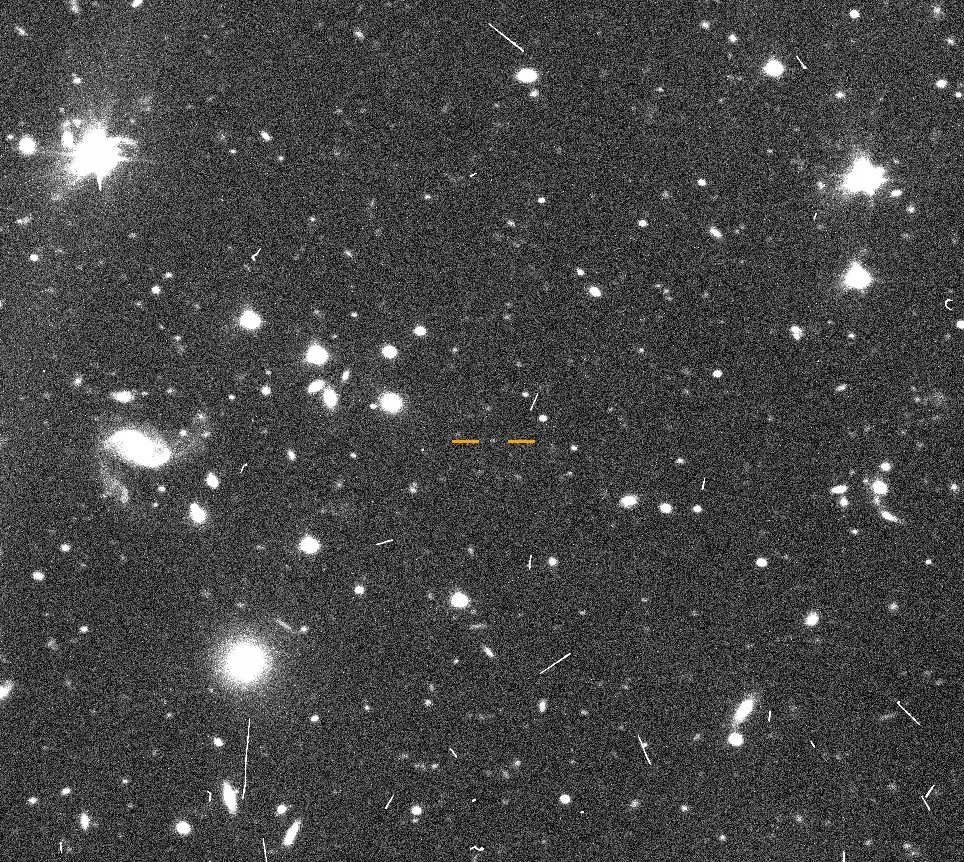
Figure showing the discovery images of Farfarout (2018 AG37) from the Subaru telescope on January 15 and 16, 2018. The distant background stars (round white dots) and galaxies (oval, elongated and extended objects) do not move during the 24 hours between images, but Farfarout, being at 132 AU from the Sun, moves between images as shown by the orange highlighted area. Other things come and go in the two images such as the very bright and streaky high-energy cosmic rays that strike the camera detector during the 5-minute long images. There is also a main-belt asteroid that streaks by in one of the images just to the left of Farfarout. Credit Scott S. Sheppard/Carnegie Institution for Science.
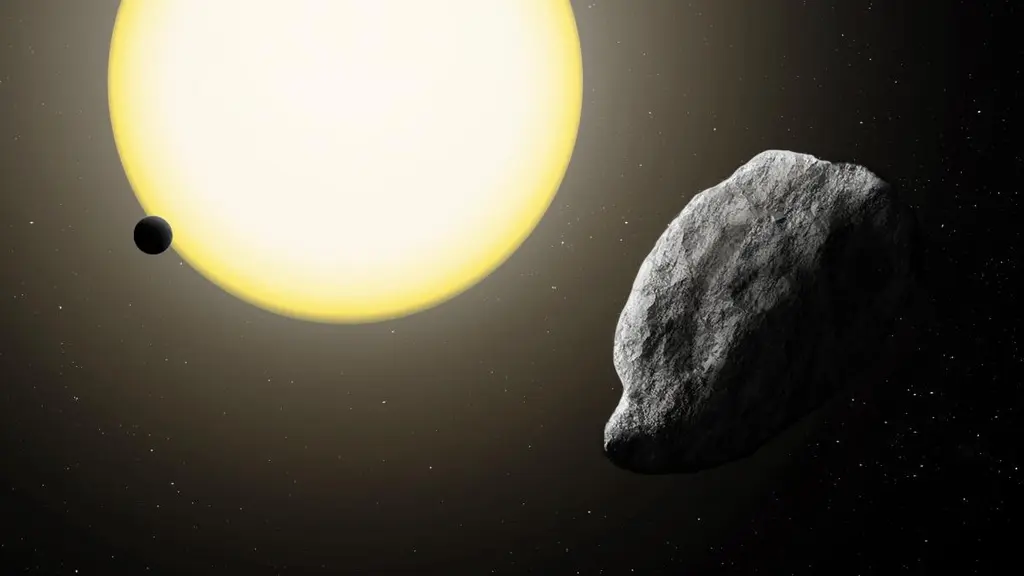
An artist’s conception of the newly discovered asteroid 2021 PH27, which has the shortest known orbital period for an asteroid and second shortest for any object in our Solar System after Mercury. Illustration by Katherine Cain courtesy of the Carnegie Institution for Science.
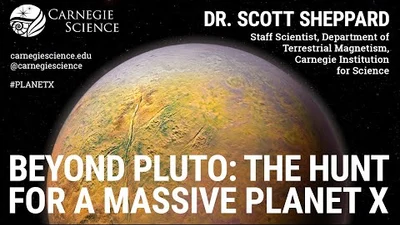
Beyond Pluto: The Hunt for a Massive Planet X - Dr. Scott Sheppard
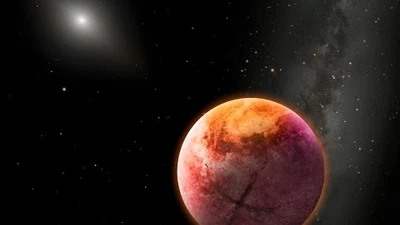
Carnegie Neighborhood Lecture Series Presents Scott Sheppard "Beyond Pluto: The Hunt for Planet X"
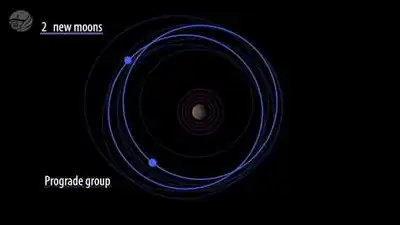
Five Questions About Jupiter's New Moons
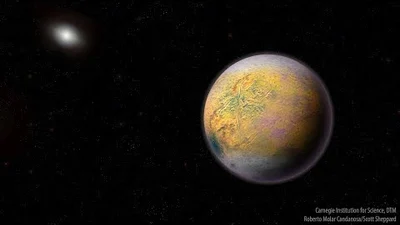
The Goblin 101: New Dwarf Planet 2015 TG387
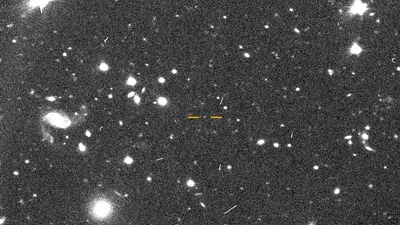
FarFarOut
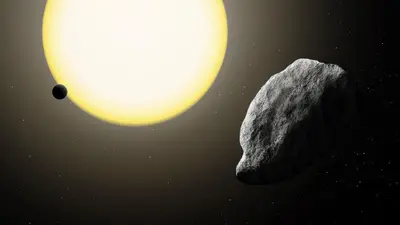
CloseIn Asteroid

